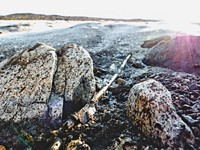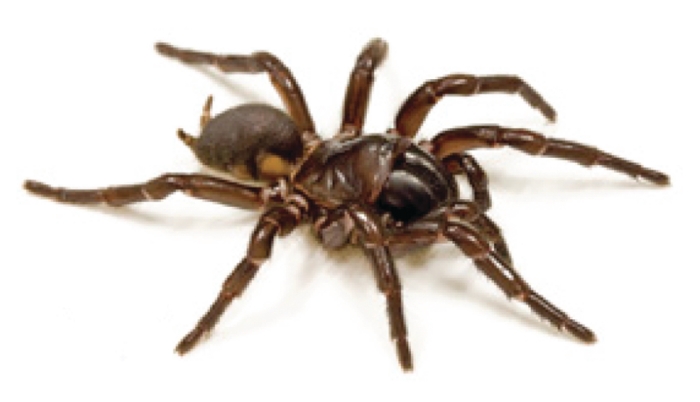Advertisement
Grab your lab coat. Let's get started
Welcome!
Welcome!
Create an account below to get 6 C&EN articles per month, receive newsletters and more - all free.
It seems this is your first time logging in online. Please enter the following information to continue.
As an ACS member you automatically get access to this site. All we need is few more details to create your reading experience.
Not you? Sign in with a different account.
Not you? Sign in with a different account.
ERROR 1
ERROR 1
ERROR 2
ERROR 2
ERROR 2
ERROR 2
ERROR 2
Password and Confirm password must match.
If you have an ACS member number, please enter it here so we can link this account to your membership. (optional)
ERROR 2
ACS values your privacy. By submitting your information, you are gaining access to C&EN and subscribing to our weekly newsletter. We use the information you provide to make your reading experience better, and we will never sell your data to third party members.
Education
Elemental Manhattan, Giant Rats Take East Africa
by Lauren K. Wolf
September 19, 2011
| A version of this story appeared in
Volume 89, Issue 38

Richard Pieper wants everyone to start spreadin’ the news: He launched a project last month called Elemental Manhattan that’s especially for chemistry aficionados.
Not only is 2011 the International Year of Chemistry, Pieper says, but it is also the 200th anniversary of the Commissioners’ Plan of 1811, which established a street grid on the island of Manhattan. Being a Columbia University adjunct professor of architecture conservation with a background in geochemistry, Pieper decided to observe this happy coincidence by overlaying the periodic table on a map of Manhattan and, with a little stretching, found that the two fit beautifully.
To participate in Elemental Manhattan, he says, enthusiasts can go to the area on the map that corresponds to a certain element, assume its identity, and then “react” with a friend coming from a separate neighborhood on the overlaid map assigned to a different element.
For instance, Pieper says he and a friend recently reacted over lunch. “It was a very hot, muggy, and smoggy day, so I suggested that we make carbon monoxide,” he tells Newscripts. “I took the subway to Columbus Circle and walked down the west side of Eighth Avenue, becoming oxygen at 55th Street. We reacted at a burger joint in Worldwide Plaza, where she had become carbon.”
Because of Pieper’s conservation interests, he says that he’d eventually like to re-create the cycle of reactions involved in fabricating and curing historic lime mortars—going from limestone (CaCO3) to quicklime (CaO) to hydrated lime [Ca(OH)2]and back. “By my rough calculations,” Pieper says, “I need eight people and at least 16 beers.”
To join Pieper or share your own reaction, go to the project’s website, www.elementalmanhattan.org.
Many a Big Apple dweller, at some point, has reacted when crossing paths with those other urban residents—rats. But Manhattanites should be grateful that they don’t have to encounter some of the rats that live in East Africa.
The African crested rat, or Lophiomys imhausi, can grow to be 21 inches long—at least twice the size of the common sewer rat. And if that weren’t enough to induce a person to shriek, some of the African rodent’s hairs are slathered with poison, according to a recent study (Proc. R. Soc. B, DOI: 10.1098/rspb.2011.1169).
Dogs especially might want to think twice before tangling with the large rodent, says lead researcher Jonathan Kingdon of the University of Oxford. While he was growing up in East Africa, Kingdon says, gossip was rampant about “cocky terriers charging at this woolly, decrepit-looking bungler.” In some cases, the dogs didn’t survive after biting the crested rat. But if they did, he adds, “the next encounter was met by whining terror and the total absence of all that former cockiness.”
Because of this intriguing reaction, Kingdon and his team examined the rat and its hairs more closely. What they found is that L. imhausi gnaws on the bark of the tree Acokanthera schimperi, known for its use in poison arrows. The tree’s bark mixes with the rat’s saliva, forming a colloid that the rat applies to a hidden strip of short hairs on its body. When L. imhausi is attacked or surprised, it parts the bushy hairs along its flanks, exposing the shorter poison-laden ones to its predator.
Using Fourier transform infrared spectroscopy, the researchers matched the poison’s active ingredient to ouabain, a crystalline glycoside that inhibits the sodium-potassium pumps found in the cell membranes of mammals. The scientists hope that an understanding of L. imhausi’s own immunity to ouabain might translate to future medical therapies.





Join the conversation
Contact the reporter
Submit a Letter to the Editor for publication
Engage with us on Twitter